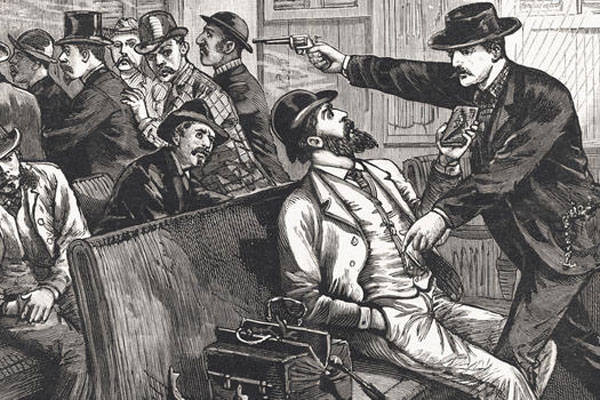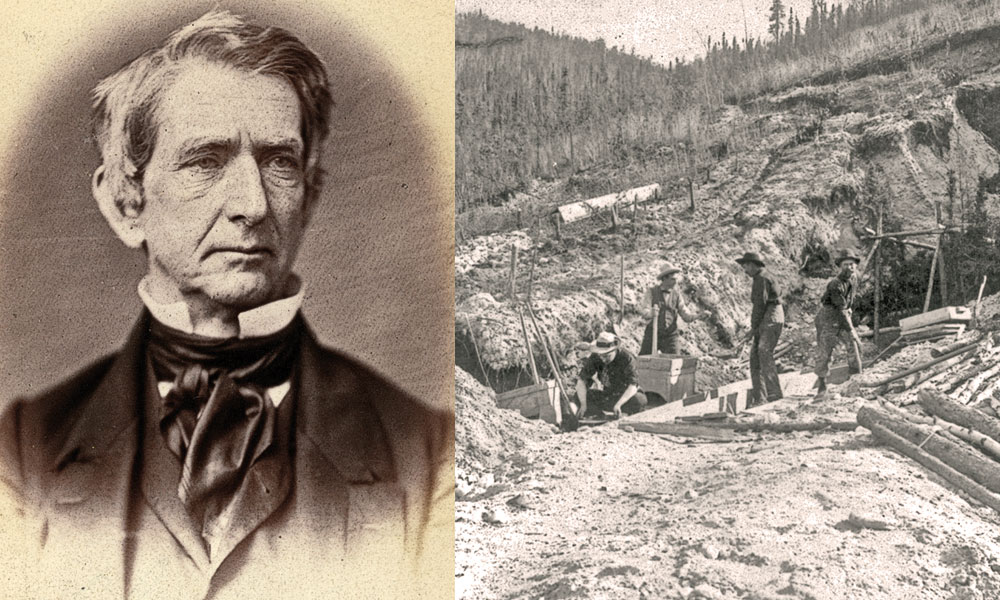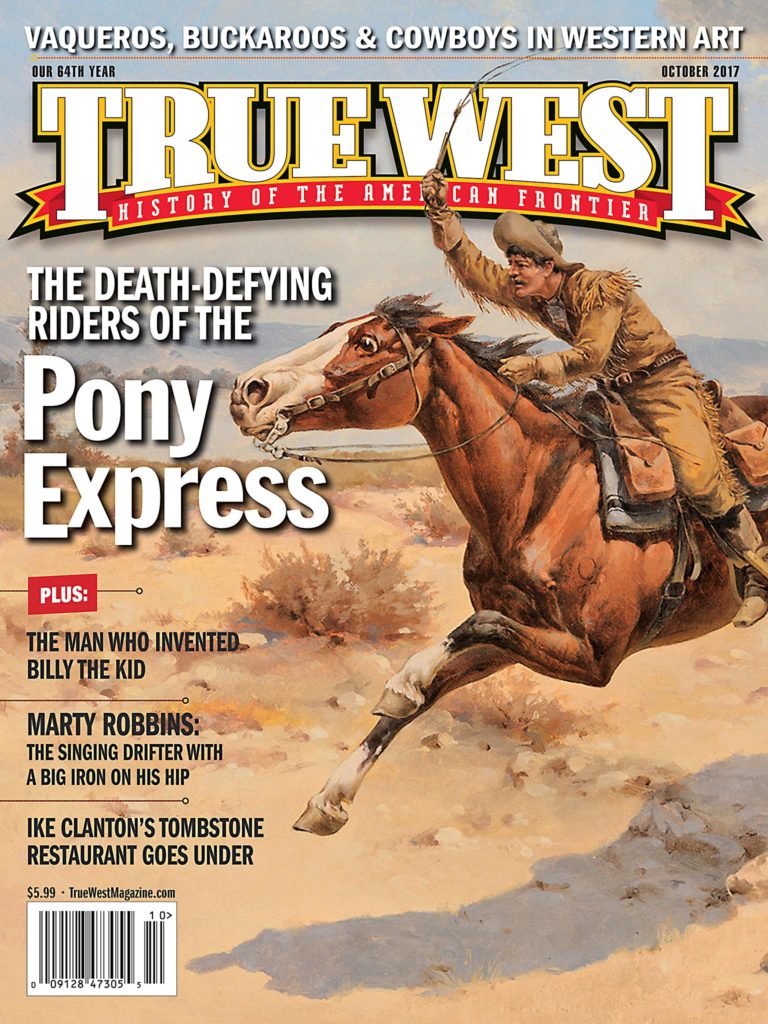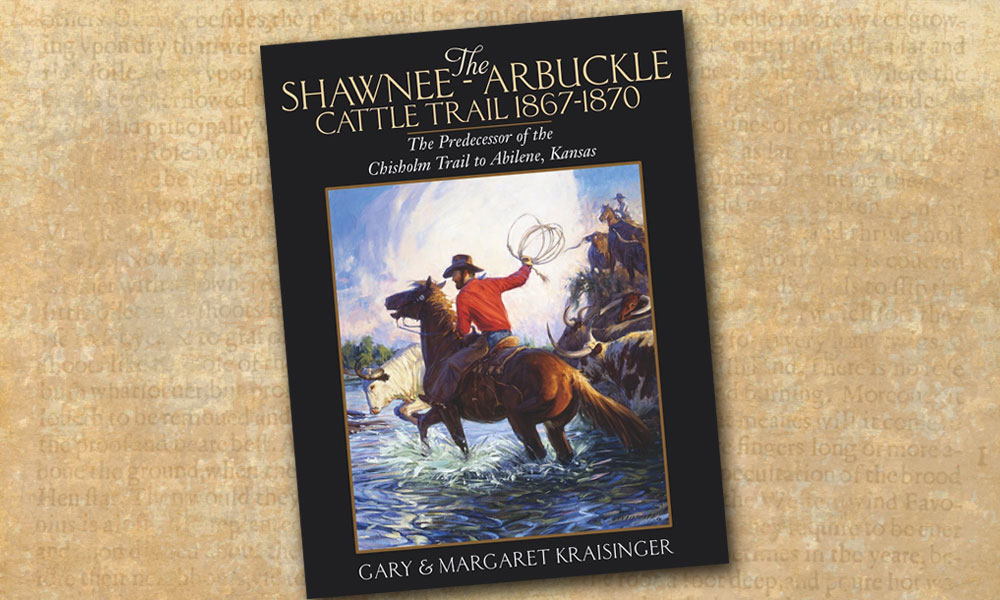
With communities from South Texas to Kansas celebrating the 150th anniversary of the Chisholm Trail in 2017, The Shawnee-Arbuckle Cattle Trail 1867-1870: The Predecessor of the Chisholm Trail to Abilene, Kansas (Mennonite Press, $30) by Gary and Margaret Kraisinger should be well received as a groundbreaking history of the origins of the famous cattle drive corridor.
This is the Kraisingers’ third book on Southwestern and Great Plains cattle-drive history (The Western, the Greatest Texas Cattle Trail, 1874-1886 [2004] and The Western Cattle Trail, 1874-1897, its Rise, Collapse, and Revival [2015]) and the release of the map-filled volume is perfectly timed for historians, students and Old West history buffs who have an abiding interest in the origins of the Chisholm Trail.
In The Shawnee-Arbuckle Cattle Trail, the Kraisingers clearly establish, through detailed study of archival maps and primary sources—including the memoirs of cattle trail cowboys—the earliest and more easterly routes taken by Texas trail bosses and their giant herds of longhorns to reach Joseph J. McCoy’s stockyards and drover’s cottage, adjacent to the Union Pacific Eastern Division Railroad tracks in Abilene, Kansas.
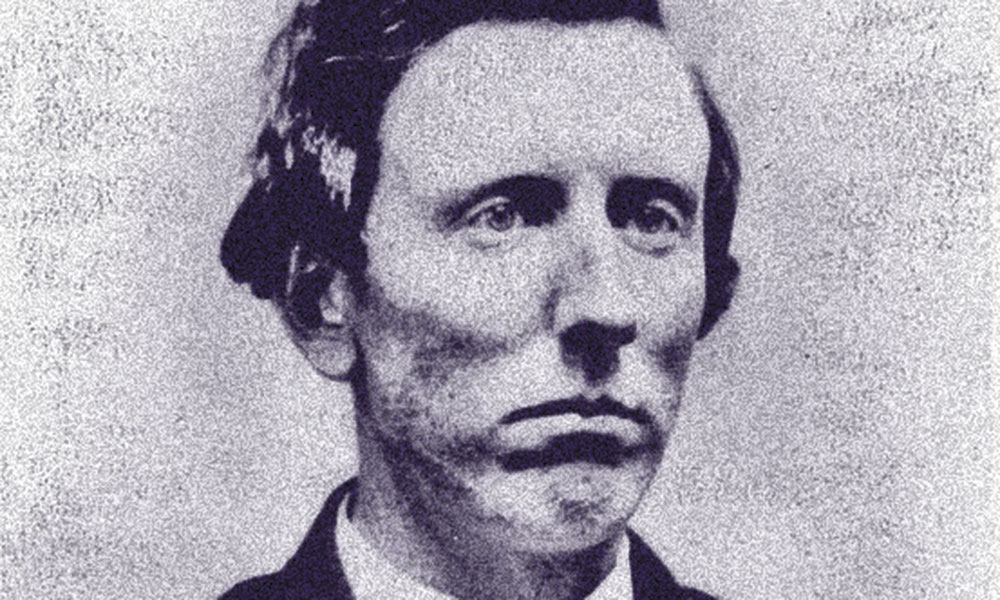
— Courtesy Dickinson County Historical Society, Abilene, Kansas —
The authors state in the book’s foreword that, “Contrary to popular belief, this pathway did not, at first, cross the Red River at Red River Station and go northward from there to Abilene, and cowboys who trailed into Abilene from 1867 through 1870, did not say, ‘We came up the Chisholm Trail,’ but stated that they had come ‘by way of Fort Arbuckle.’”
The strength of the Kraisingers’ research is revealed in their well-annotated prose with accompanying footnotes, bibliography and maps. Anyone who has done primary research on the American West—especially trail, wagon, stage, rail and automobile routes—will understand and appreciate the painstaking work it takes to piece together the historic maps and match them with modern byways. Gary Kraisinger’s maps, which appear in the authors’ three cattle trail books, are invaluable resources for researchers and provide visual guideposts for historians to expand on the Kansas couples’ conclusions.
The authors also provide, in great detail, how and why the route of the trails changed—and with each new route—a new name was adopted for the preferred pathway. The Kraisingers’ research clearly reveals it was the Shawnee-Arbuckle Cattle Trail that stockmen used initially to reach Abilene from 1867-1869, until the following year when drovers moved west to cross at Red River Station.
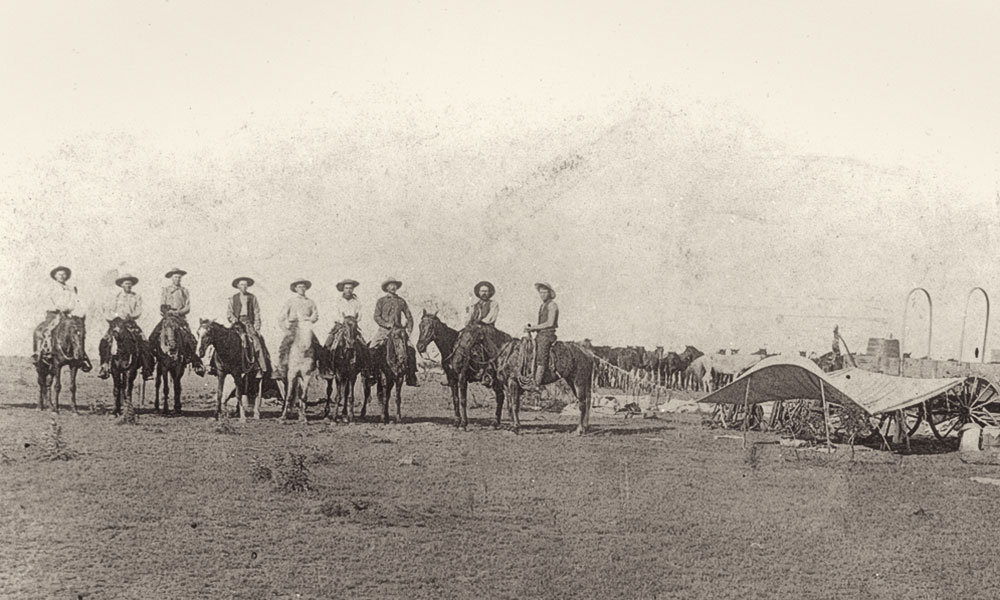
— Courtesy University of Texas at Arlington Special Collections —
The new “‘more direct’” pathway was referred to as the “Abilene Trail” prior to it earning its well-known moniker, Chisholm Trail. As the Kraisingers’ so clearly prove: “The route of the Abilene Trail, later known as the Chisholm Trail, began at the Red River at Red River Station and continued north from there to go to Abilene, Kansas, beginning in 1870.”
With The Shawnee-Arbuckle Cattle Trail, the Kraisingers’ three volumes are the most comprehensive work ever published on the historic era of Texas cattle trails. As a Western historian, myself, I plan to keep the Kraisingers The Shawnee-Arbuckle Cattle Trail 1867-1870 close at hand as a ready source of primary research on Texas, Oklahoma and Kansas history. And I will use it as a travel book to carry when traveling the historic highways and byways of the region in search of the great American cattle trails—and the spirits of the cowboys who helped build a nation and inspired 150 years of American legend and lore worldwide.

